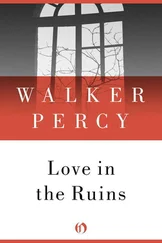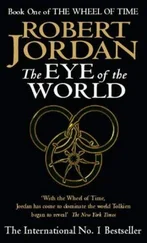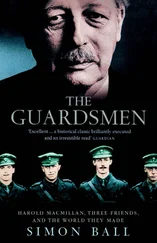Masson was back in London in either July or August 1775.[33] He had been sending seeds and living plants to Kew from the Cape, but now on his return, he had much more to show.[34] Solander was at Kew, where Masson had gone back to live, on Saturday, 26 August and reported to John Ellis, his close friend and fellow botanist, that he had just seen Masson ‘with a great cargo of new plants … a glorious collection’.[35]
Solander did not give many details about the collection but the antiquary Richard Gough alerted his friend and fellow antiquary the Reverend Michael Tyson that Masson had brought home a great variety of new species of plants from the Cape of Good Hope, ‘which grew and blowed at sea’.[36] Tyson, himself, then went to Kew to see Masson and was amazed by what he found: totally new species of heather, protea, geraniums, and an undisclosed number of dried varieties.[37] Tyson spoke of more than two hundred examples of just two species but when Masson wrote to Linnaeus at the end of December 1775, his first letter to ‘the Father of Botany’, introducing himself as having been employed ‘some years past, by the King of great Brittain, in collecting of Plants for the Royal Gardens at Kew’, and remarking that he had made two trips into the interior with his student Thunberg and had met Sparrman, he announced that he had ‘added upwards of 400 new species to his Majesties collection of living plants’.[38]
What no one mentioned was that Masson had also collected a magnificent plant known by its popular name as the bird-of-paradise flower but which, when it arrived at Kew in 1773, was given the name Strelitzia reginae , in honour of Queen Charlotte, Duchess of Mecklenburg-Strelitz.[39] It is likely that Thunberg directed him to this plant since he had already come across it on his first journey to the interior.[40] This may have been Banks’s favourite plant:[41] certainly, when, in 1795, it came to putting together a substantial gift of plants for Catherine II, Empress of Russia, among many Cape plants collected by Masson, Strelitzia reginae , which Banks described as ‘one of the most rare, & certainly … one of the most beautiful plants in Europe’, headed the list of plants chosen.[42] Even more remarkable, perhaps, is that Masson collected the first specimen of the cycad Encephalartos altensteinii , which was at Kew in 1775, and which, in 2009, was re-potted: it is believed to be the oldest living pot plant in the world.
Banks, too, was delighted with Masson’s collection, ‘a profusion of Plants unknown till that time to the Botanical gardens in Europe’.[43] In his estimation, ‘by means of these, Kew Gardens has in great measure attained to that acknowlegd superiority which it now holds over every similar Establishment in Europe; some of which, as Trianon, Paris, Upsala, etc., till lately vyed with each other for pre-eminence, without admitting even a competition from any English Garden.’
Masson’s second assignment, also authorised by Sir John Pringle, was to collect for Kew on the Atlantic islands of Madeira, and the Canaries, and in the British West Indies.[44] It is likely that Banks and Solander once again had a hand in deciding where Masson should go: they had both been to Madeira in 1768 on the Endeavour ’s outward voyage and, during their stay from 12 to 18 September, had collected many plants that they brought back with them in 1771.[45]
Masson left for Madeira on 19 May and arrived there on 5 June 1776.[46] Around this time, Pringle, who was by now George III’s Physician Extraordinary, in addition to being President of the Royal Society, no longer had time for Kew.[47] Banks took over. He arranged Masson’s finances, sent him instructions and supplies, and, in return, Masson sent Banks plants and seeds and letters.[48]
In what might have been his first letter to Banks, dated 28 July 1776, Masson noted that he hadn’t yet explored very much of the island but he believed he had already found some new plants. He had about fifty plants for Banks and some seeds for Aiton.[49] Apart from that he said little: he remained a man of few words for the next thirty years.
Masson would have arrived well equipped to explore the botany of the Atlantic islands, especially Madeira and the Canaries. The islands’ plants were well represented in Sloane’s herbarium at the British Museum.[50] Both island groups were a common stopover for British ships, both naval and East India Company vessels, on their way into the South Atlantic. It was where they stocked up with wine and fresh fruits for the next part of the voyage. Those who were interested in botany helped themselves to the local flora. There was a good, if small, selection of plants from the area already growing at Kew.[51]
From the summer of 1776 until the summer of 1779, Masson stayed and collected in the Atlantic region – seeds for Aiton and plants for himself and Banks.[52] Madeira was the base where he spent most of his time when he wasn’t travelling. The itinerary he followed during this period began with a stay in Madeira which lasted for almost a year until May 1777; this was followed by a trip to the Azores, not planned originally but which Charles Murray, the British Consul in Funchal, who found Masson very convivial, convinced him he should visit.[53] Masson stayed in the Azores from late May 1777 to early December 1777, during which time he visited the islands of São Miguel and Faial – Johann and Georg Forster had collected on Faial between 14 and 19 July 1775 on the final homeward stretch of Cook’s second voyage, and might have discussed this with Masson – and São Jorge;[54] Masson left the Azores in December for the Canaries, via Madeira, and remained there until early October 1778, and from there he travelled back to Madeira, where he stayed until May 1779.[55]
Because of a lack of plant lists, it is not possible to give a definite account of the shipments, but about one thousand plants, many of them new to European science, would probably be close to the mark. Collecting was not a problem. Masson went well off the beaten track where there was plenty to be found.[56] What was difficult was shipping his collections back to England. The problem, as he said himself, was that while he was in the islands the American revolutionary war was in progress on the other side of the Atlantic. American cruisers were present but not British naval vessels. He had to use whatever shipping was available: a Dutch ship on one occasion; on another a French brig on its way to Dunkirk with a stop at Portsmouth, and even a British privateer making its way back to Plymouth.
However the difficulties of this trip were as nothing when compared to those of his next destination, the West Indies.[57] Masson left Madeira sometime in the early part of 1779 for Barbados. What happened then is unknown, but at some time he went from there to Grenada, where he became embroiled in the war between Britain and France, France by this time fighting on the American side. The French assaulted and captured the island from the British in the early part of July 1779.[58] Masson was, in Banks’s words, ‘call’d upon to bear arms in its defence, which he did, & was taken prisoner’.[59] When he was finally released, he made his way to St Eustatius, a Dutch Leeward Island, between St Kitts and St Martin.
There he found some respite from the conflict and island-hopped, taking in St Kitts and Nevis but found that the people there were unsupportive of his efforts: ‘a philosopher’, he wrote, ‘is [a] monster of nature to the people in this part of the world’.[60] He then headed to Saint Lucia, where rains and an impenetrable forest kept his botanising to a minimum, but he was still able to put together a small collection of thirty plants for Banks. Then things went from bad to worse: in the early days of October 1780, a deadly hurricane hit the island and Masson lost the entire collection he had with him at the time, his clothes and papers, and almost his life.[61]
Читать дальше












